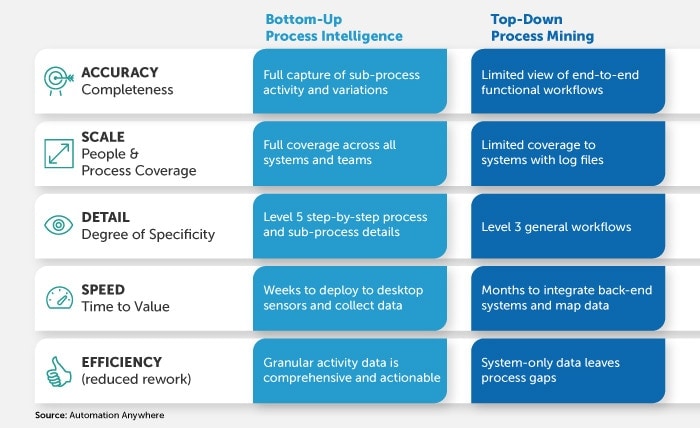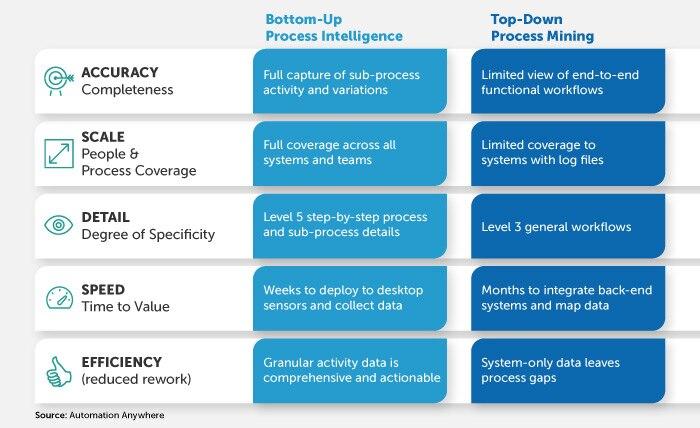- Login
- Search
- Contact Us
-
Have a question? Our team is here to help guide you on your automation journey.
-
Explore support plans designed to match your business requirements.
-
How can we help you?
-
- AI
AI Without the Hype From pilot to full deployment, our experts partner with you to ensure real, repeatable results. Get Started
- Automation Anywhere AI
-
- Solutions
Featured Agentic Solutions
Accounts Payable Invoice automation—No setup. No code. Just results. Accounts Payable
Customer Onboarding Scale KYC/AML workflows. Customer Onboarding
Customer Support Keep queues moving, even at peak load. Customer Support
Healthcare RCM Revenue cycle management that runs itself. Healthcare RCM
- Products
Platform Features
- Agentic process automation (APA)
- Robotic Process Automation (RPA)
- View all Products
-
- Resources
Get Community Edition: Start automating instantly with FREE access to full-featured automation with Cloud Community Edition.
Featured
 Named a 2025 Gartner® Magic Quadrant™ Leader for RPA.Recognized as a Leader for the Seventh Year in a Row Download report Download report
Named a 2025 Gartner® Magic Quadrant™ Leader for RPA.Recognized as a Leader for the Seventh Year in a Row Download report Download report- Become an Expert
- Developer Tools
- Get Support
- View all resources
-
- Partners
Find an Automation Anywhere Partner Explore our global network of trusted partners to support your Automation journey Find a Partner Find a Partner
- Find a Partner
- For Partners
-
Blog
Where to Begin Your Process Transformation Journey
This article was originally printed on the FortressIQ website and includes updates to reflect the company’s change in status. FortressIQ is now part of Automation Anywhere, and its offering is now our process intelligence product FortressIQ
Developing a deep and detailed understanding of your business processes lets you root out inefficiencies, double down on operational excellence, and make better, more informed decisions to reach your goals. But simply mining system log files misses the details in every process while deploying consultants to map processes takes time and disrupts operations.
Instead, intelligently decoding how your people and processes work across systems and screens, and across your entire business, is a better approach.
Capturing process intelligence to understand business processes has traditionally been tough to obtain because the methods have been manual. The drawback is that it results in static, incomplete process data. Today’s technologies, which evolved from these traditional methods, offer an automated and intelligent approach that’s faster and captures more detail.
Here’s how to process insight capture has evolved:
- Process mapping is the traditional, human-based route where business analysts and consultants interview and look over the shoulders of your workers. It’s slow and expensive, the sample size is limited and incomplete, and it can’t realistically cover processes across the entire organization.
- Process mining is a back-end, system-centric approach that captures a narrow, step-by-step workflow based on how users interact with specific systems. This method requires access to log files, which limits coverage. It also misses tasks like data collection, calculations, or other steps performed in separate applications.
- Process discovery is a modern alternative to mining. It tracks workflow at the UI level, no matter who performs the task or which application is used. It excels at capturing discrete subprocesses but has trouble scaling because it ultimately requires human evaluation of the results.
- Process intelligence advances process discovery by using computer vision and Artificial Intelligence (AI) to uncover actionable process insights at an enterprise scale. It has the speed and coverage to capture, record, and analyze granular steps in complex use cases, plus adds intelligence to quickly identify new opportunities.
This spectrum of process insight techniques is referred to as a top-down manual approach, versus a bottom-up intelligence-driven approach. They all help you gain a better understanding of processes, but the bottom-up approach offers more granular insights, faster, and across a wider range of processes. The result is more business impact in less time.
Choosing an approach to gathering process insights
If you have process insight experience, you may lean towards combining multiple approaches to address specific requirements. But if you’re tackling a project for the first time, it can be difficult to determine the best approach.
A top-down manual approach adds the perceived expertise and guidance of a team of consultants. That can be helpful but adds more cost and time by a few orders of magnitude. On the other hand, a modern bottom-up approach offers deeper insights and faster results but puts the decisions in your hands.
So, the question is, do you take a bottom-up or top-down approach?
Top-down misses the detail
Top-down process mining technologies piece together a process within a single system, but since they do not capture granular user-level activity, they don’t capture all the key steps of users or systems. For example, process exceptions and variations are not reliably identified because they may involve activities outside the analyzed system.
Additionally, enterprises often run hundreds of applications. Many of those—including Excel and common email clients—don’t generate usable log files. So, any use of those tools will not be captured, and the resulting process maps won’t represent the complete business process. The missed steps then aren’t included in automation efforts, resulting in costly rework once deployed.
Bottom-up provides more insights and speed
In contrast, process intelligence and process discovery technologies capture detailed user activity across all systems and tools, covering every granular step, including task interdependencies and connections. There is no need to access APIs or log files to create the process maps, which speeds the entire project, and the more complete insights keep you from automating broken or inefficient processes. Analytics can also quickly compare processes and system usage across teams and tasks.
Speed is what really separates the top-down and bottom-up approaches. You can expect to receive business value in weeks with process intelligence instead of months with process mining.

Start at the process
If you are exploring process insights for the first time, process intelligence is the logical starting point given its more comprehensive view of operations. It offers a faster time to value, takes less IT resources since you are not integrating with APIs or capturing log files, and is substantially less expensive and disruptive than unleashing a team of consultants into your operations.
As you eventually dig deeper for process insights, process mining could complement process intelligence. Combining both approaches provides the most comprehensive insight into the implications of a process.
Experience FortressIQ process intelligence.
About Rahul Talwar
Formerly with FortressIQ, Rahul is a director of product management at Automation Anywhere.
Subscribe via Email View All Posts LinkedInGet to know the Agentic Process Automation System.

For Students & Developers
Start automating instantly with FREE access to full-featured automation with Cloud Community Edition.



